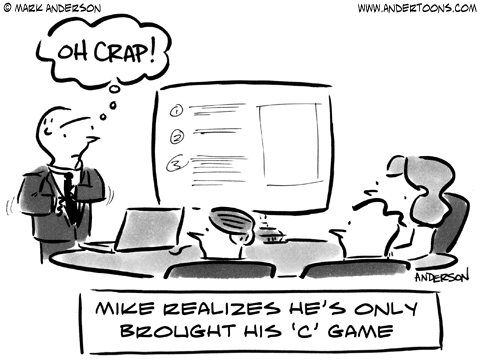31, 2017

How do you write a script for outside sales?
Question:
I’ve just started going out and seeing customers and realised that I need a script to maximise the information that I gather from them before I move on to talking about the product. There are so many questions that can be asked, in so many different orders? How do I cope with customer variations.
Basically it seems like a big problem at the moment – but I’m sure it will be an iterative process. Where to start?
EDIT: I’m doing it but in due course we will scale it – so I want over time to make something rock solid
Answer:
This begins with collaboration with the prospect 1-2 weeks ahead of the live meeting. Start your preparation by sharing a list of stated outcomes and 3-4 primary discussion topics to achieve these outcomes for the meeting. Preferably, do this live by phone with your prospect so that there is a genuine conversation around these points. This verifies how far you can progress the sale as a result of this in-person meeting.
Depending on the complexity of your product and size of the purchase (in dollars), a few examples of a single best outcome might be:
- The prospect agrees to a purchase of your product/service.
- The prospect agrees to provide you budget information and a desired implementation timeline so that you can develop a specific work plan to meet these criteria.
- The prospect agrees to a second meeting with the remaining colleagues whose input are required for the purchasing decision.
- The prospect agrees to a follow up phone call on a specified date to review the work plan your propose.
Once you have verbal agreement, document the agenda and send via email, finishing the email with a question:
“Does all of this look right?”
This should prompt a short reply of agreement 0 “Yep looks good..” or a few suggested changes. Having this verification is critical to ascertaining your desired outcomes.

Once you have this outcome in place, work backwards in your sales call mapping. For example, say your stated outcome is #2 above:
“The prospect agrees to provide you budget information and a desired implementation timeline so that you can develop a specific work plan to meet these criteria.”
Let’s work backwards from there:
- This outcome indicates that your prospect is committing time and effort to the sales process following your meeting. The prospect will only do so if you have articulated how your product will solve a critical business challenge or need.
Have a Sales Question?
Grab a time to chat with Scott here.
- To determine if your product will solve this business challenge, you need to identify specific needs or gaps in their existing process. Ask yourself what customer information must you uncover to know that your product is a solution for the prospect, and how will you present your solution in the context of these needs.
- To identify these needs, you will need to ask situational and needs analysis questions by developing specific questions you can ask in order to uncover these needs. Peter Mullen mentioned “SPIN” in his answered. This is an excellent framework (though not the only one) to use as you develop your question list. Here is a white paper posted on the Huitwaite website explaining the SPIN Model. Also, check out this five-minute video with Neil Rackham, author of “SPIN Selling:”
- As you develop these questions in your sales call map, the detailed script will emerge for you. Once you have this detailed script, summarize it into groups of questions to create a simple flow chart illustrating how you expect the conversation to unfold. Pull this flow chart into a one-page handout to use in the meeting.
- As you sit down with the prospect to begin the meeting, share the sales call map (of course label it something else for the prospect, i.e. “Meeting Roadmap”) and tell the client: “Based on the meeting outcome you mutually agreed to, I put together this Meeting Roadmap. This is to ensure that we cover all of the relevant questions we need to cover.” Summarize the map verbally in two minutes or less.
- Then ask – “Does this look about right to you? Is there anything that we’re missing or topics that you think we should covered that I’ve missed?” Once you have agreement, they you just begin with – “Okay great! So to start, let’s go through a couple of these questions about your current approach to …” And away you go.
- PRO TIP: Once you have your single best outcome and sales call map set, be ready to toss it. You might walk into to the conference room upon arrival to find three people sitting and waiting for you, including the company CEO. Then your prospect turns to you and says – “I rounded up a few folks that I thought would be interesting in hearing more about Beyond Transition and seeing your presentation. Hope that’s okay…” (Meanwhile, you hadn’t prepared a presentation deck because you thought you were having a one-on-one meeting with your prospect.)
Good luck.
**This Q&A article was originally posted on Quora. Check out Scott’s Quora page here.
